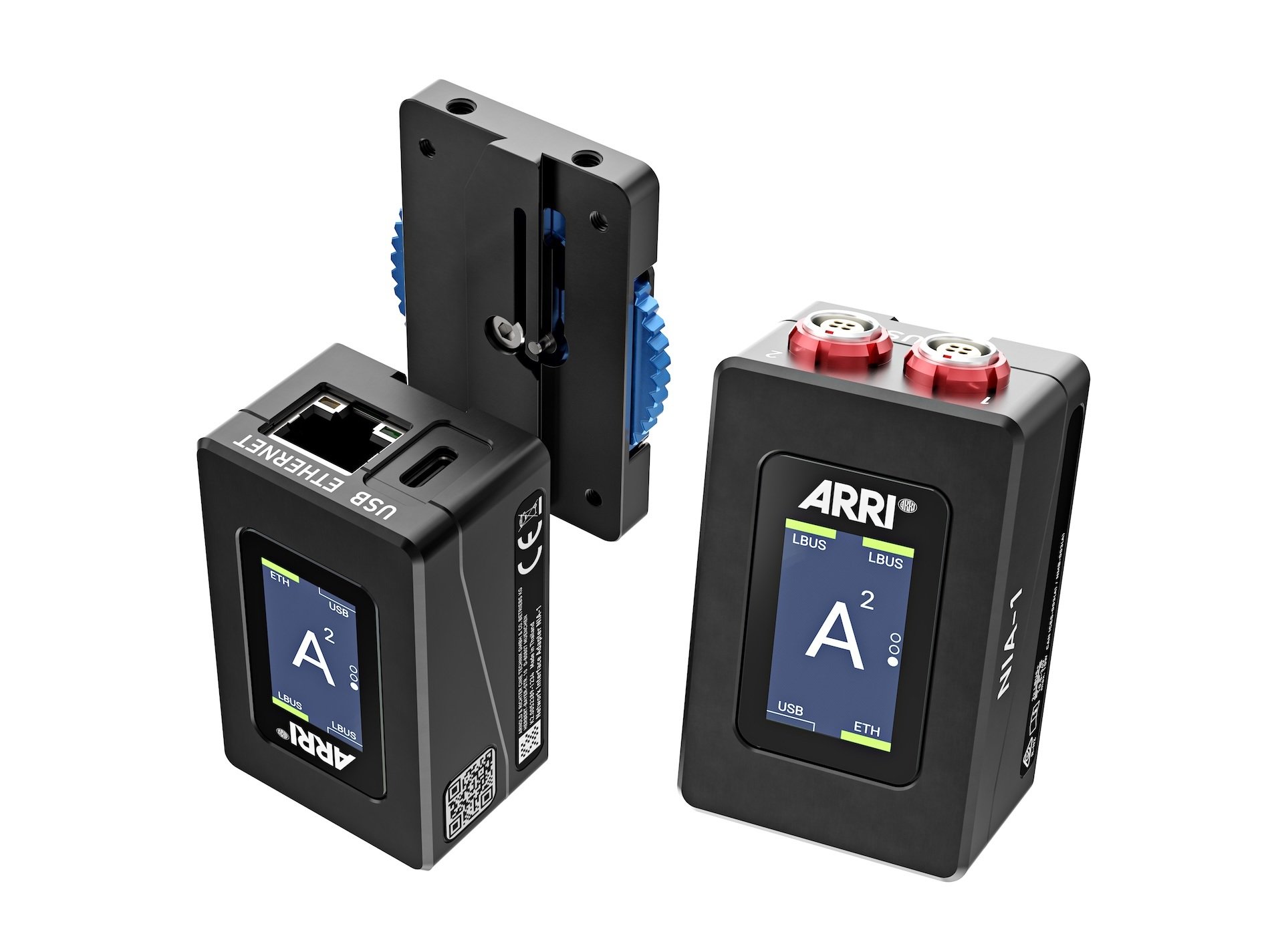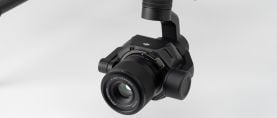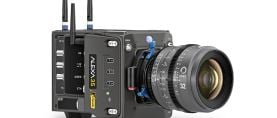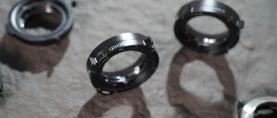
Arri Announces NIA-1
The Network Interface Adapter introduces Ethernet connectivity to the Arri Electronic Control System.
Arri has unveiled the NIA-1 Network Interface Adapter, bridging modern IP workflows and traditional LBUS-based camera- and lens-control systems.
By introducing Ethernet connectivity to the Arri Electronic Control System, the solution enables advanced remote control and scalable multi-device configurations. ECS tools such as the Hi-5 hand unit can function with negligible latency over an IP network, expanding third-party camera compatibility and benefitting both cine and live productions.
The NIA-1 features LBUS, Ethernet and USB-C connectors. The status of each connector is displayed on the touchscreen, which provides an intuitive user interface. The NIA-1 can also be controlled from any device in the same network via a web interface. To configure IP networks on set, the user simply sets the same network channel letter designation on each connecting device — for example, “A” for the A camera. The NIA-1 automatically manages complex network settings, but manual IP configuration is also an option when incorporating it into advanced networks.
The NIA-1 improves and extends control of third-party cameras from within the Arri ecosystem. Instead of multiple specialist cables for different cameras, each with varying control limitations, the NIA-1 connects directly to the camera via a network, allowing more comprehensive control of camera functions with Arri ECS tools. Mounting the NIA-1 to any camera is simplified by the purpose-built Rotary Release Adapter (RRA-1), which has a quick-release dovetail interface.
At first customer shipment, the NIA-1 will offer compatibility with Blackmagic Ursa Cine and Sony Burano cameras, activated through permanent licenses that can be purchased in the same way as other Hi-5 licenses. The existing Sony Camera Control License for Hi-5 will offer NIA-1 compatibility for the Venice camera with the release of the first NIA-1 software update, enabling more advanced options for controlling the Venice with Arri ECS devices.
Focus pullers and DITs may want to use the NIA-1 to remotely control lens or camera settings over IP networks. For simple setups, two NIA-1 units can be connected with an Ethernet cable up to 380' long or a fiber-optic cable if longer distances need to be covered. For underwater shots, a submerged camera with a NIA-1 can be connected via Ethernet to another NIA-1 at the surface, as well as an Arri RIA-1 that permits the focus puller to operate a Hi-5 untethered. For crane shots, an Ethernet cable can connect a NIA-1 on the camera to another at the crane base, reducing the radio-signal distance for remote focus pulling. For motion-control or robot-camera setups, the NIA-1 allows low-latency control of Arri lens motors from anywhere in an IP network.
The NIA-1 complements Arri’s Alexa 35 Live-Multicam System; the system’s secondary Ethernet tunnel is ideal for NIA-1 connectivity, allowing seamless integration with the Arri LPS-1 and real-time camera and lens control over significant distances. Arri CSS products such the 360 Evo stabilized remote head are also compatible with the NIA-1; they can be used together with ECS tools over a single Ethernet or fiber connection as part of a plug-and-play setup. In tandem with announcing the NIA-1, Arri is extending its partner program and encouraging third-party vendors to integrate Arri ECS into their hardware and software products.
The Arri NIA-1 will begin shipping in Q3 this year.
Follow Arri on Facebook and Instagram.
Keep up with American Cinematographer on Facebook and Instagram.






